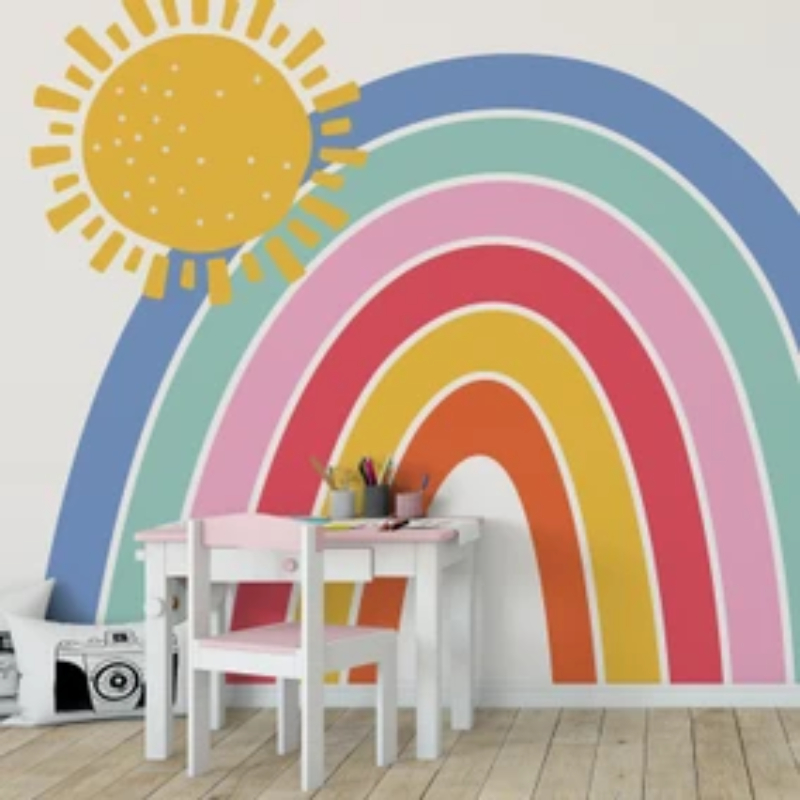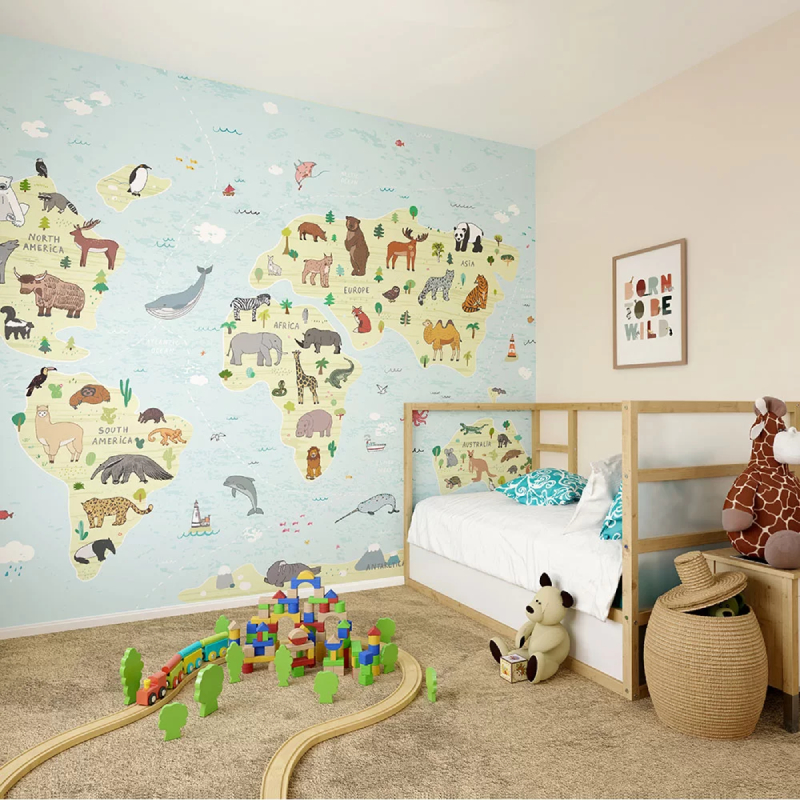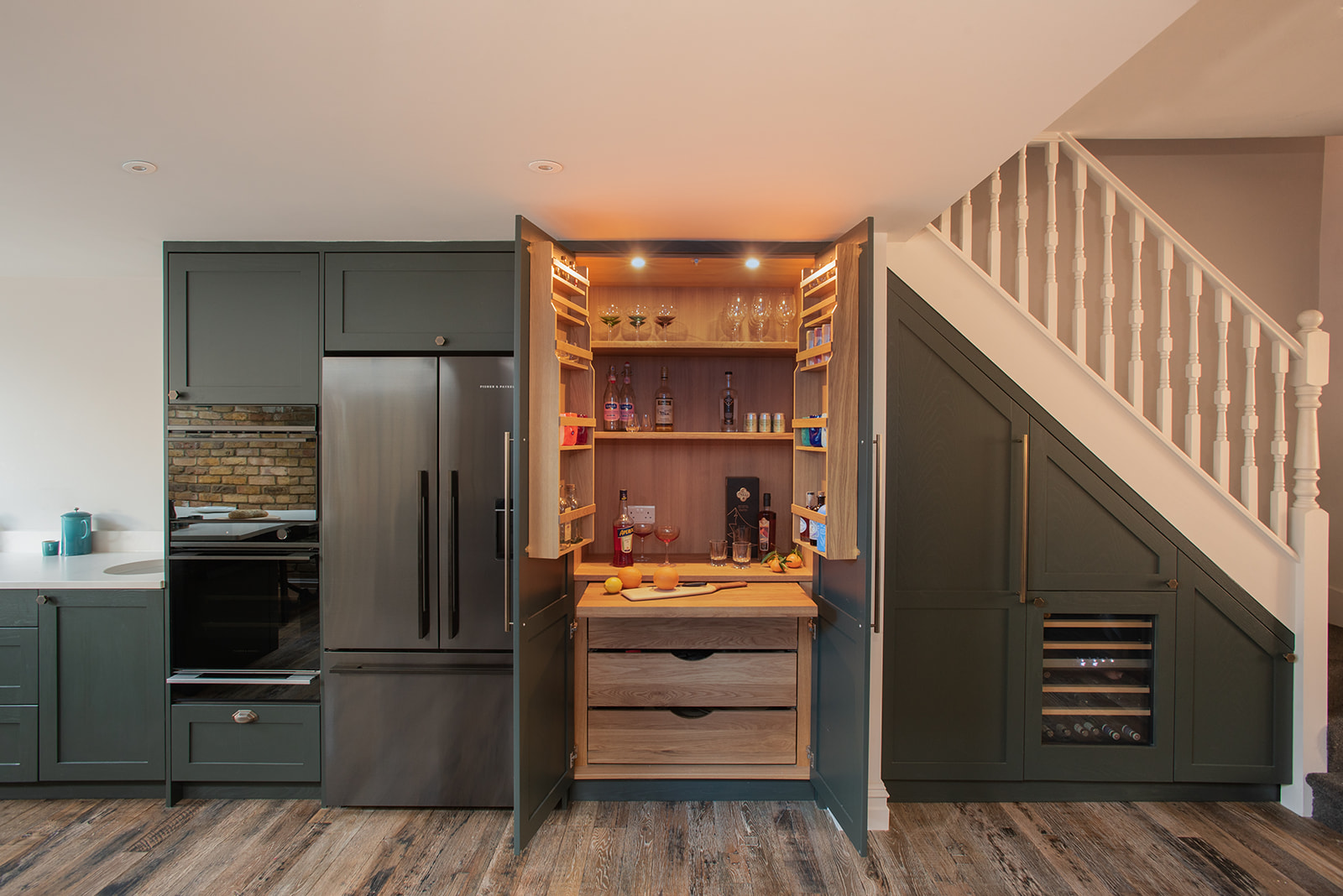Shared kid bedroom ideas: Practical advice for a scheme that works for more than one
If you're seeking shared kid bedroom ideas you're in the right place. We've got plenty of bedrooms to inspire you and expert advice to help you turn your dreams into reality
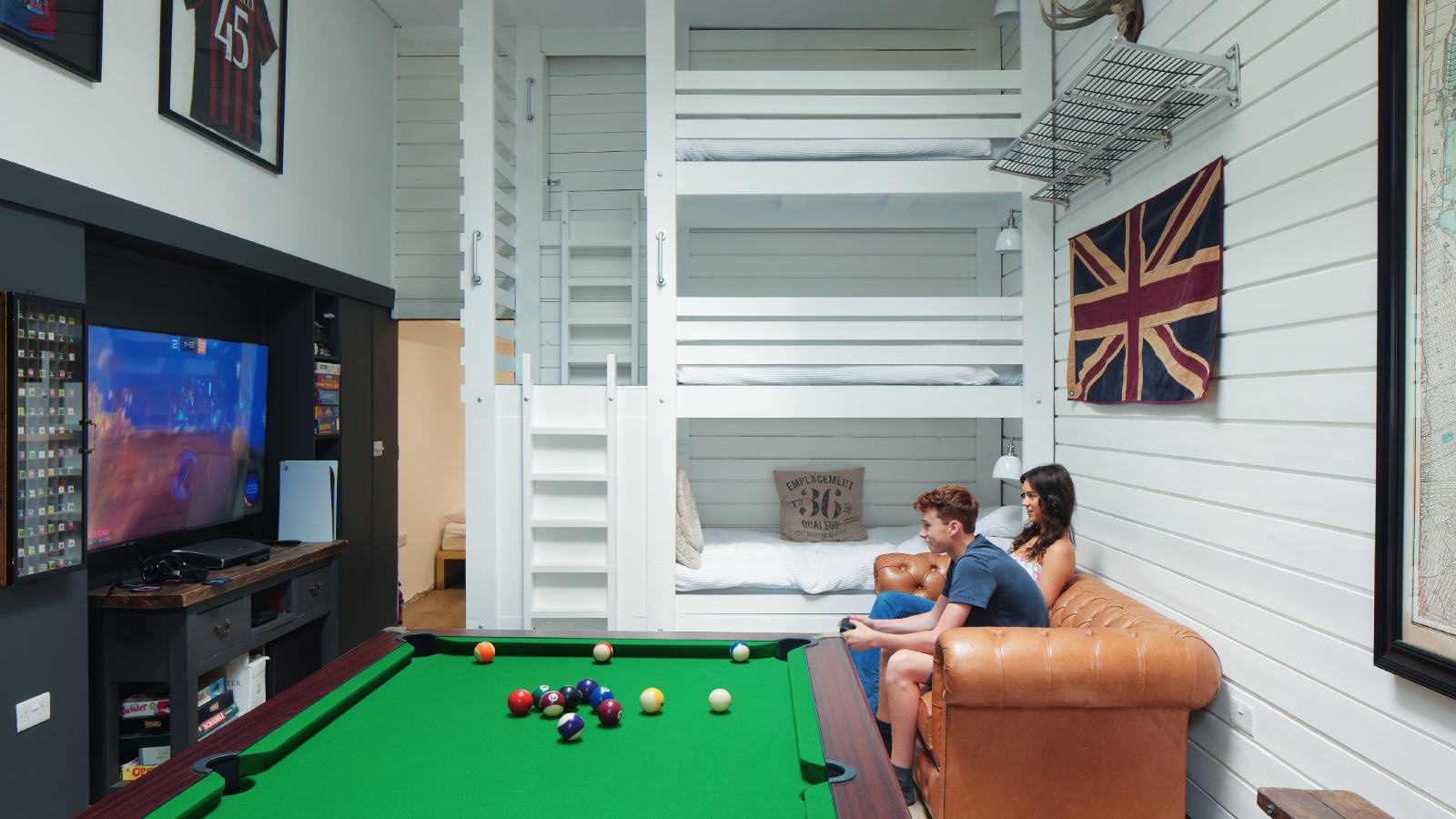
Whether you're looking for shared kid bedroom ideas because you're lacking in space, your children simply want to share a room, or you think it will help them develop a better bond, the reality is they are not always the easiest rooms to tackle.
Even with just one child, managing ever-changing likes and dislikes and the practicalities of making a space work for both rest and play can make children's bedroom design a tricky road to navigate. Add multiple children into the mix and you've got your design hands full.
To help you with your challenge, we've taken expert advice and rounded up 11 shared bedroom ideas we think will gain approval from even the most demanding of tiny divas.
Shared kid bedroom ideas still need to include personal space
"Designing a shared bedroom for children requires a balance of functionality and personal space while creating a sense of unity," says Emma Deterding, founder and creative director of Kelling Designs.
"It's about creating a space that works, will grow with the children but also allows them to have their individuality shine through."
That's not to say matching in shared bedroom ideas doesn't work. As we'll demonstrate in our selection of schemes, there's plenty of room for either clashing or combining.
Fundamentally, the route to success for producing good shared kid bedroom ideas is the same as it for most rooms – understanding the inhabitant's needs, the practicalities of the space and being prepared to add a healthy dose of style for good measure.
Bring your dream home to life with expert advice, how to guides and design inspiration. Sign up for our newsletter and get two free tickets to a Homebuilding & Renovating Show near you.
"Involve the children in the design process," suggests James Mellan-Matulewicz, CEO and creative director at Bobbi Beck. "Let them choose colours, themes, or specific items for their space. This inclusion not only makes the room more personal but also helps them feel invested in maintaining it. By balancing practicality with creativity, you can design a shared bedroom that nurtures both individuality and togetherness.”
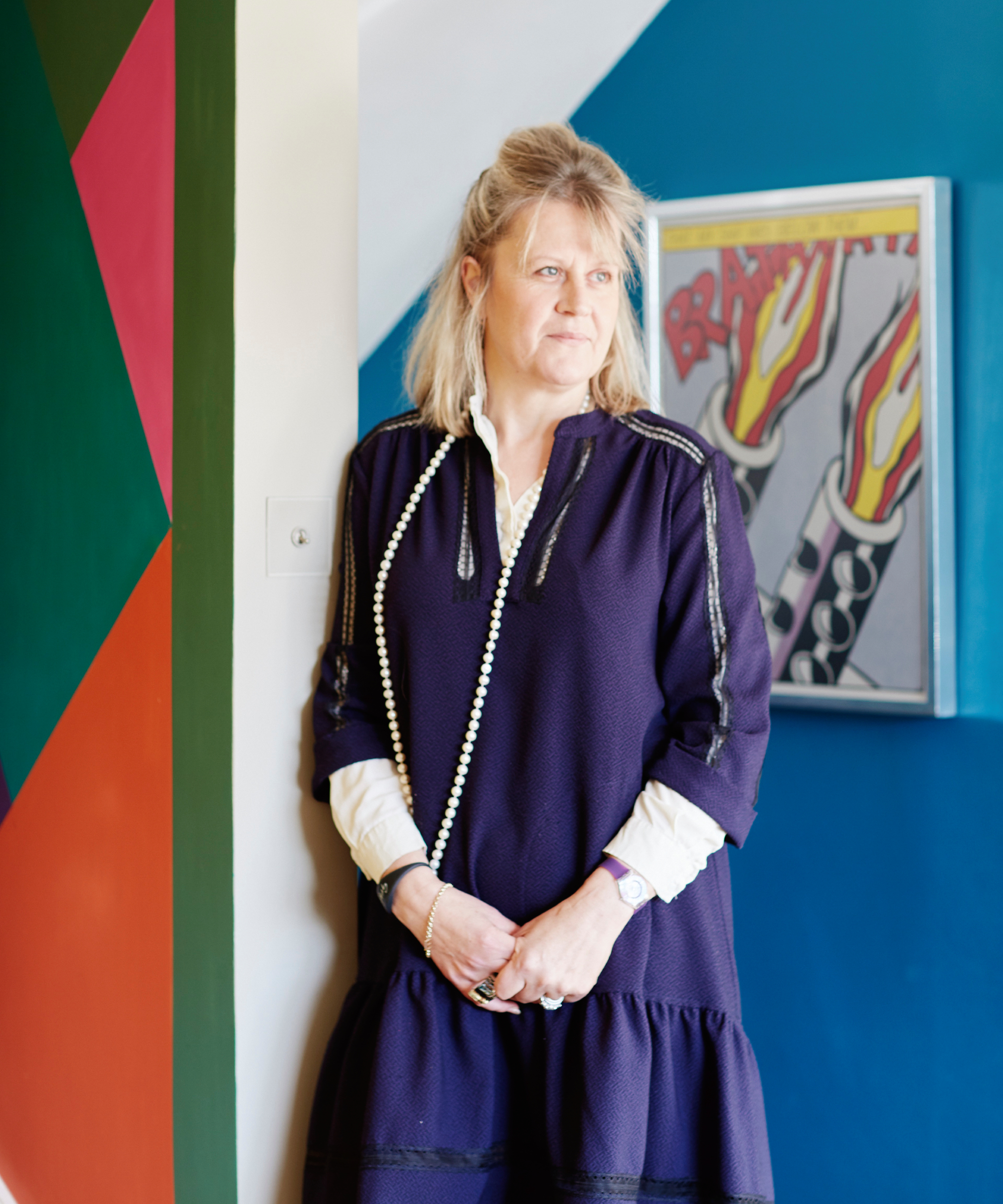
Emma Deterding is a leading interior designer who has been named among the top 100 in the world. With over twenty-five years of experience, Emma has honed her ability to offer well thought-out schemes that turn her clients' homes into beautifully designed and practical places.

James Mellan-Matulewicz is the founder and Creative Director at design and print studio Bobbi Beck. He has spent over 10 years in a variety of roles across design and creative industries.
1. Mix and match shades of the same colour
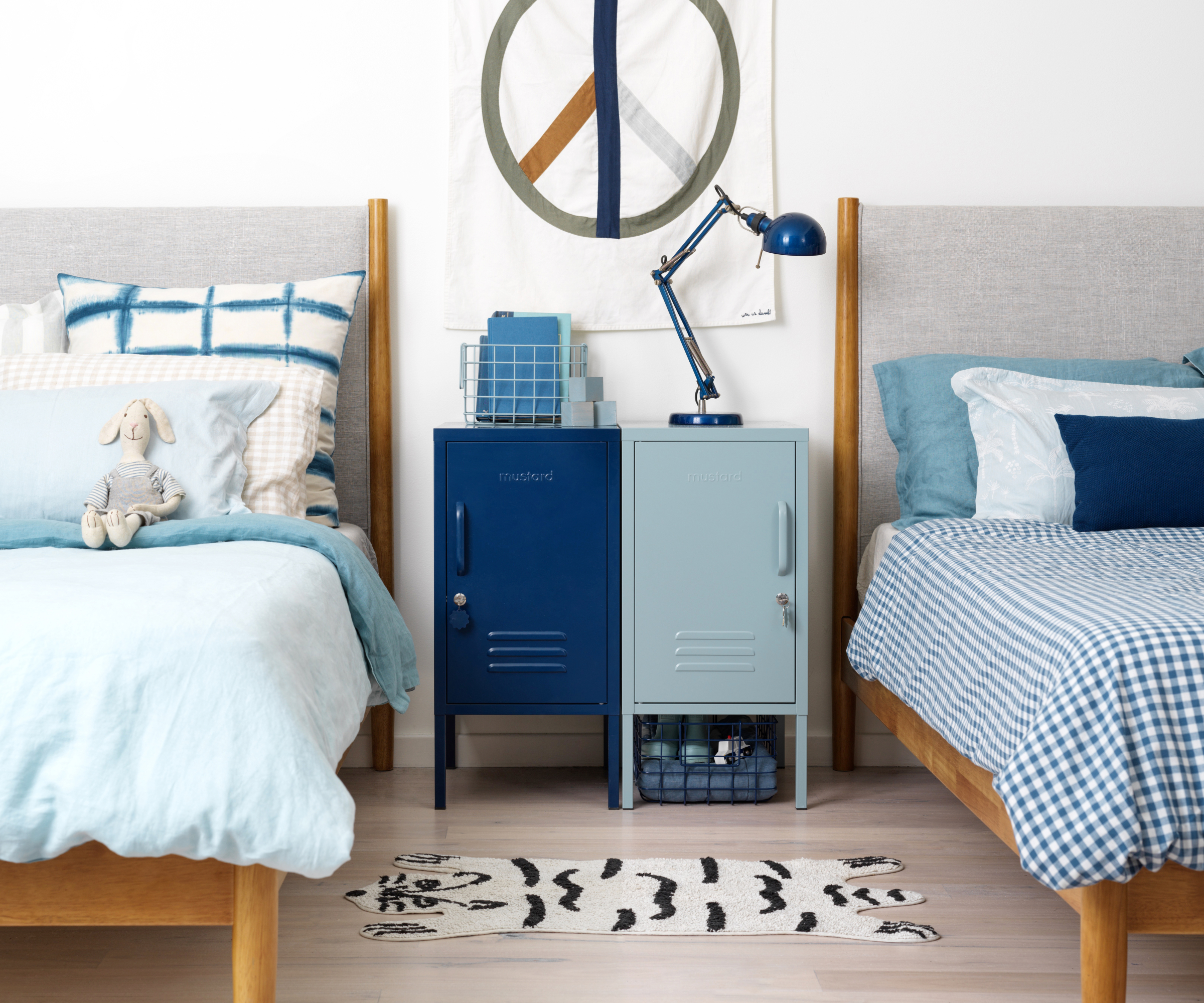
Children's bedroom ideas are usually based around colour, furniture, storage and style. And while this idea uses shades of blue, it could equally apply to any colour.
It's a great way of demonstrating how to stop shared kid bedroom ideas based on a single colour looking one dimensional. Rather than sticking with one particular shade, opt for a tonal scheme which uses different shades of the same base colour. Add in pattern and texture to create a sense of depth and you've easily designed a bedroom where even though the beds and bedside tables are the same, each side of the room looks different.
"It's important to designate individual spaces for each child," confirms Emma Deterding, "with bedding and decor that is unique to them. This will help foster a sense of ownership and privacy and ensure each child feels their own presence within the space."
You'll find these blue bedside lockers in amongst The Shorty range at Mustard Made.
2. Use your ceiling to help mark out each side of the room
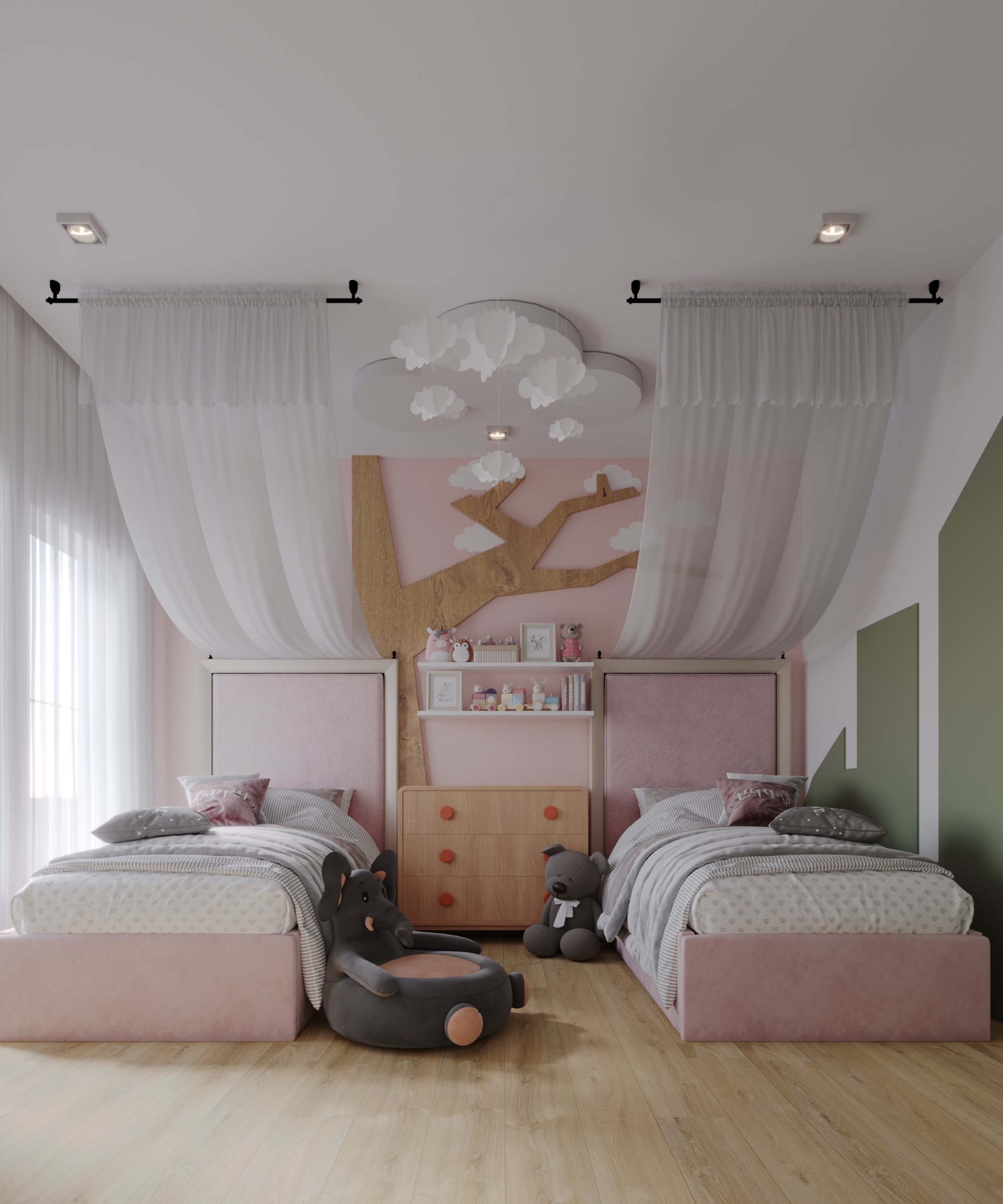
While the use of single beds in shared kid bedroom ideas is an easy way to begin defining boundaries, it's important not to forget the ceiling when it comes to any bedroom design.
It's especially important in children's rooms as it can be easy to fall into the trap of concentrating on designing the lower levels as this matches their height. And although this is essential when it comes to children's bedroom storage and furniture, you could risk end up creating a room which feels bare from the waist up.
To avoid this, use your ceiling as the fifth wall. Drape canopies over beds, paint it in different colours or hang pendant lights to showcase a themed bed. You'll not only be giving your children something to enjoy while they lay in bed, it will also help the end result look more balanced.
3. Create a feature wall with an age-appropriate wallpaper
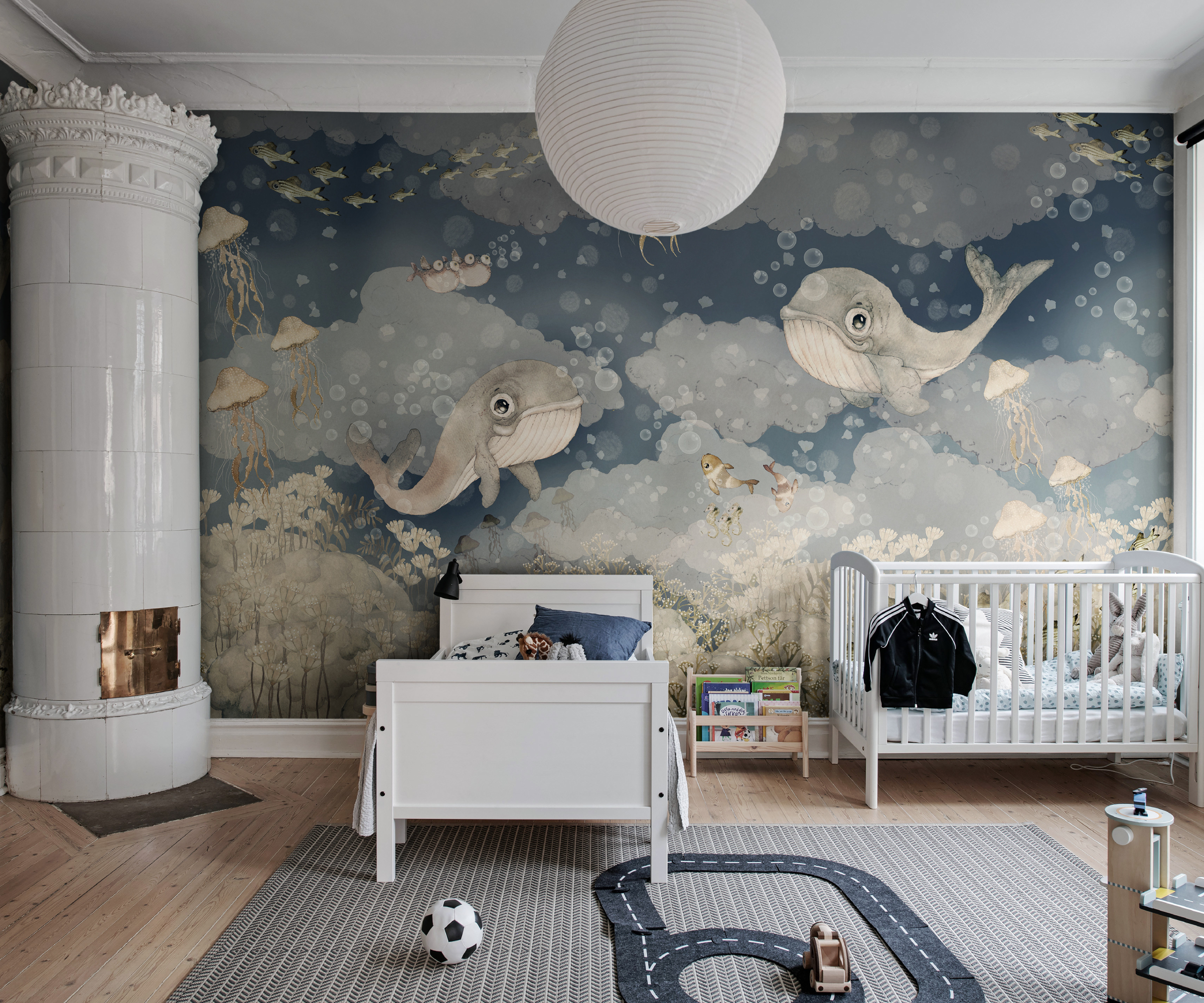
For a shared children's room where the age gap isn't too big, feature wallpaper murals can be a good way of creating a combined space that appeals to both age groups.
A fantastical design such as this Water Song mural from Rebel Walls will ignite imagination in any age whether your baby is still in a cot or your toddler has progressed to a big boy bed.
To help strengthen their relationship, "include a common area with shared toys or books to encourage bonding and cooperative play," says Helen Deterding and be sure to properly zone your space, adds Charli Davies, sleep expert and Get Laid Beds ambassador.
“When thinking about the layout of the room, especially if your children are sharing or they need to play and do homework in the same room, creating specific zones within the room with good storage solutions for each child or activity - homework, play, sleep - can be helpful in ensuring that each child has their own space within the room and that it’s still a peaceful space for sleeping," says Charli.
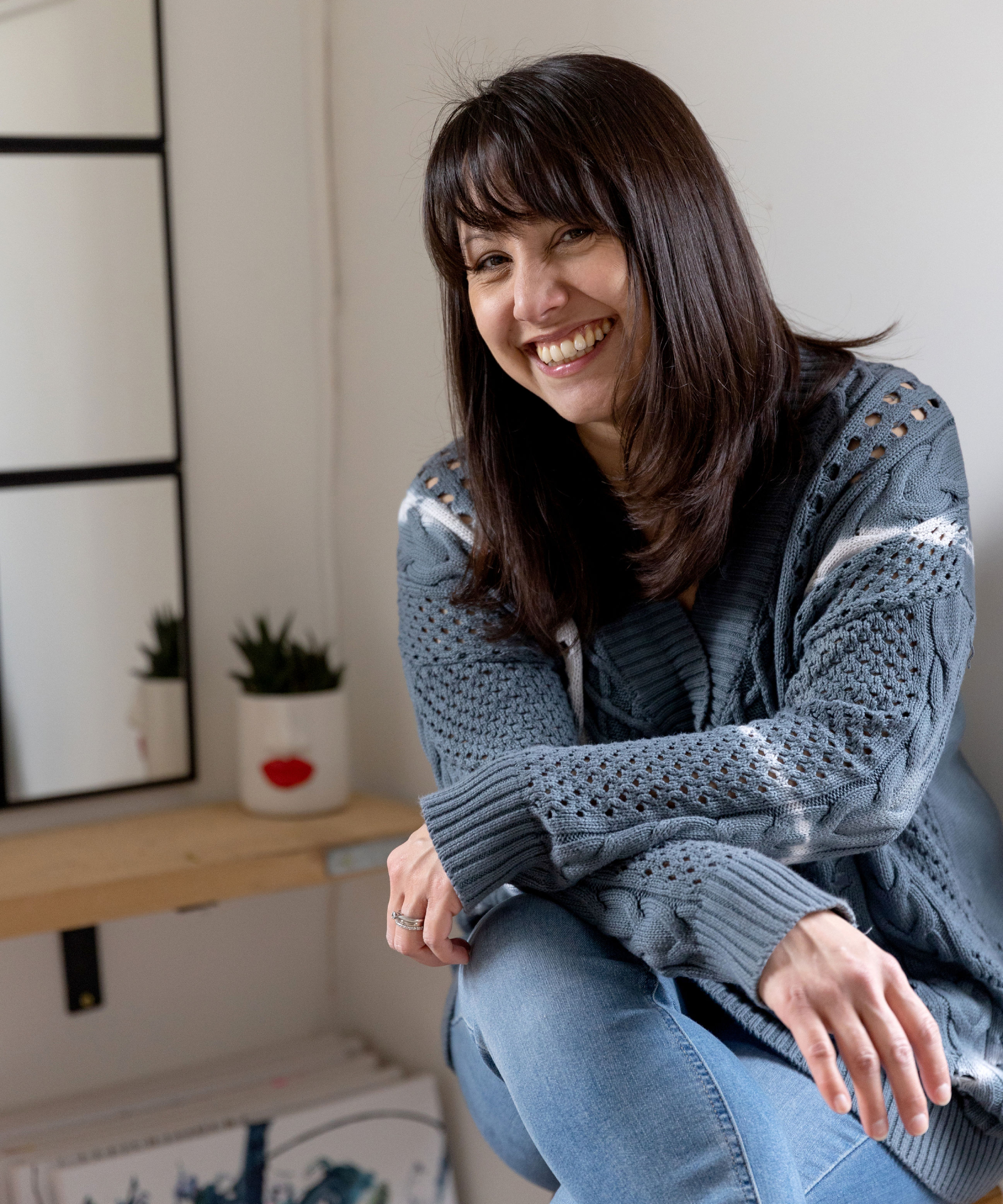
Certified Adult Sleep Coach, Sleep educator and former stressed commuter turned calm but busy business owner, Charli works with individuals and companies to comprehensively improve their sleep taking an integrated approach. She helps them to function at their best so they can live the life they want and achieve their dreams.
Some wallpaper murals for younger children
4. Use matching fabrics and lights for a perfectly paired shared bedroom idea
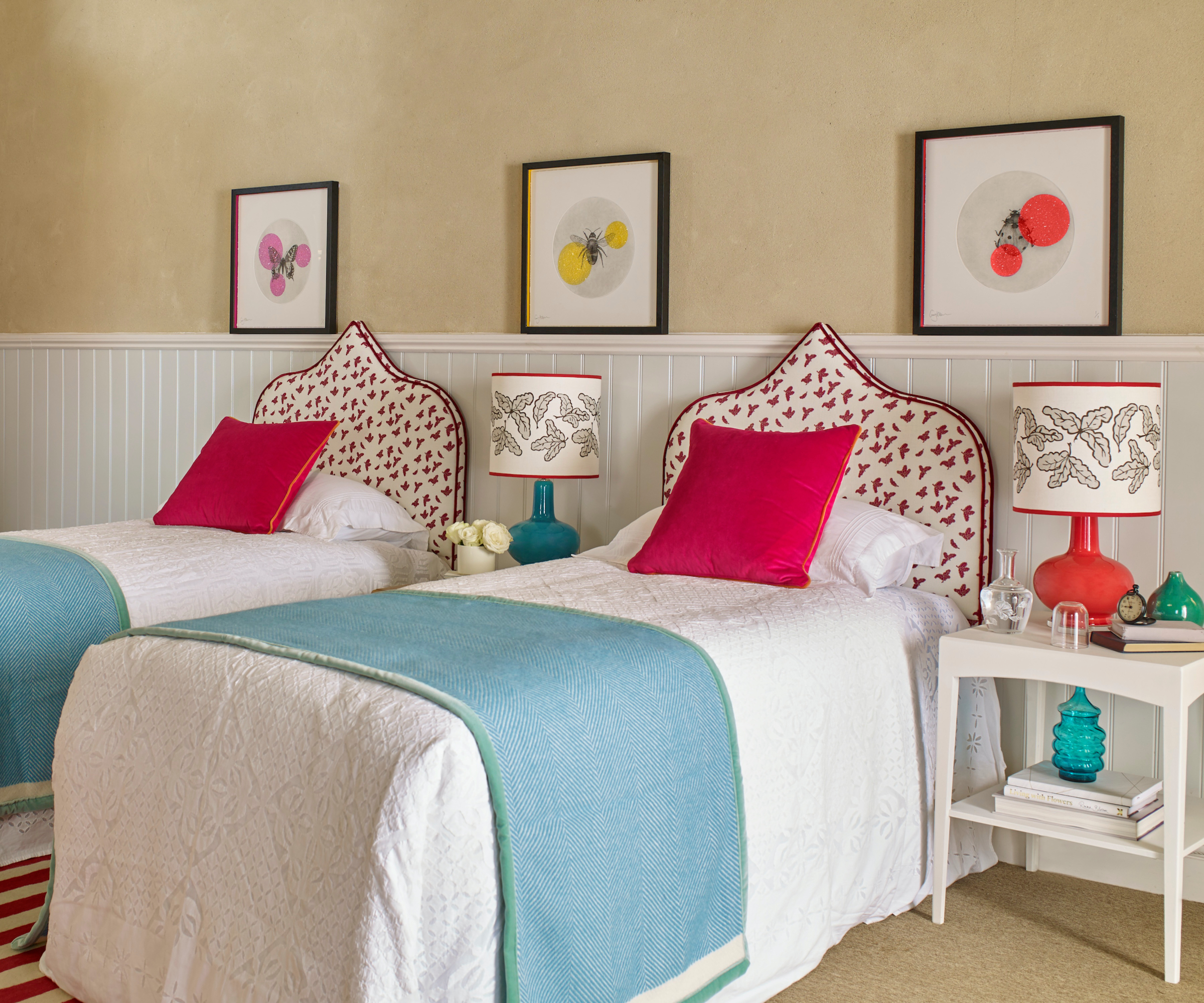
If creating collaboration is central to your design, matching colour, patterns and furniture will help with the creation of shared kid bedroom ideas that seem sophisticated and stylish.
“Begin with the layout," says James Mellan-Matulewicz. "Place beds in a way that maximizes space and provides each child with their own private area. Bunk bed ideas are a popular choice for saving space, but if room permits, side-by-side beds can create a more open feel. Incorporate storage solutions that keep the room tidy and organized, such as bedside tables with extra storage, built-in shelves, and shared closets with designated sections for each child."
When it comes to the overall design and feel, if your children are close to leaving home, opting for a more grown-up style also makes the transition from child's room to guest room far easier to manage.
However, even in a grown up space, don't be afraid to add some vibrancy, says Jo Plant, head of design at Pooky.
“Kids’ rooms really do beg for some lovely bold colour accents to give zest and bags of youthful energy. Lighting is a great way of doing this. Keep your lamps simple and solid, so they can soak up a little bit of vigorous handling, with materials such as wood or metal."
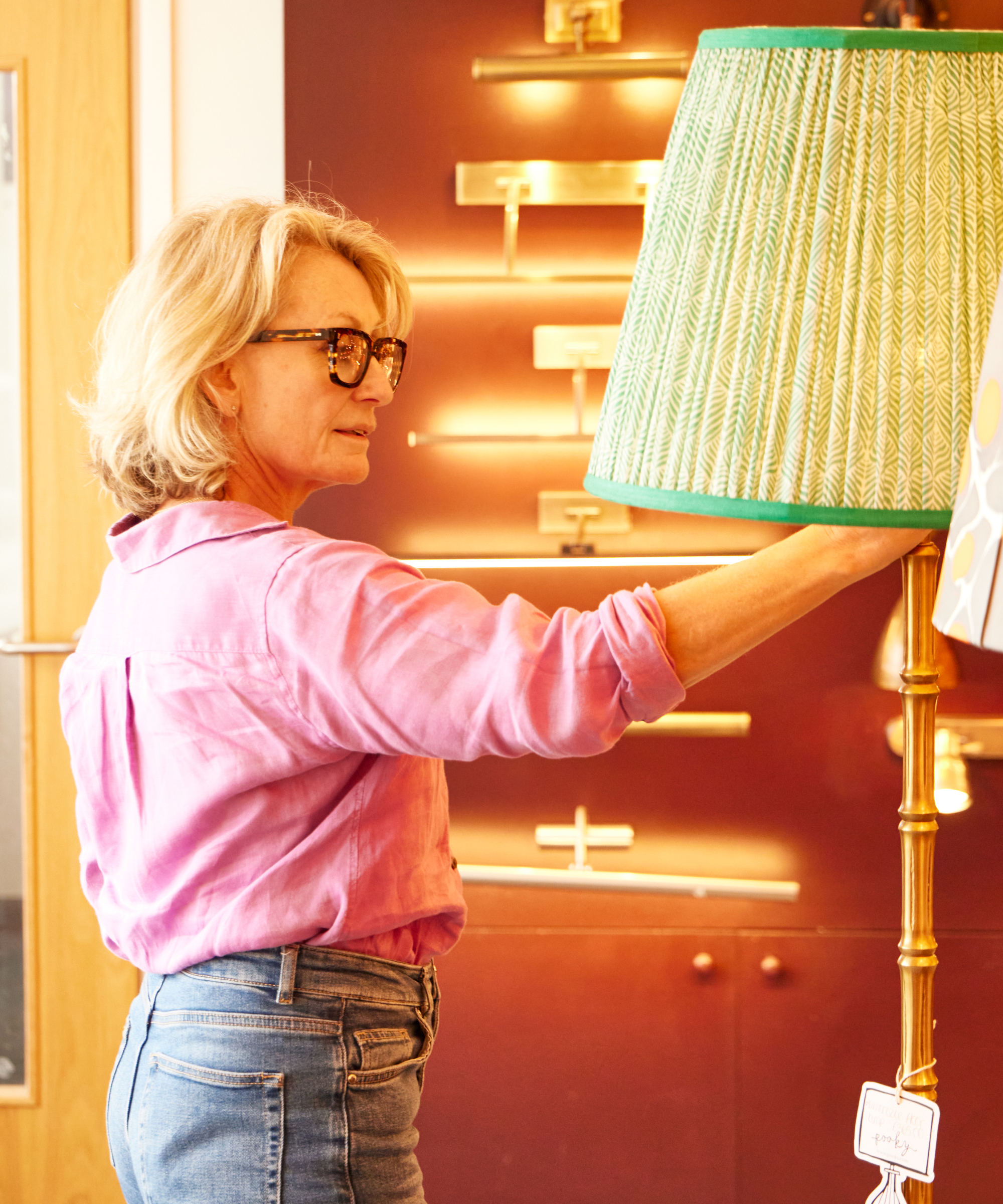
Jo Plant is head of design and production for Pooky, a lighting company based in England’s Cotswolds region.
5. Add colour with furniture but keep walls neutral for a longer lasting approach
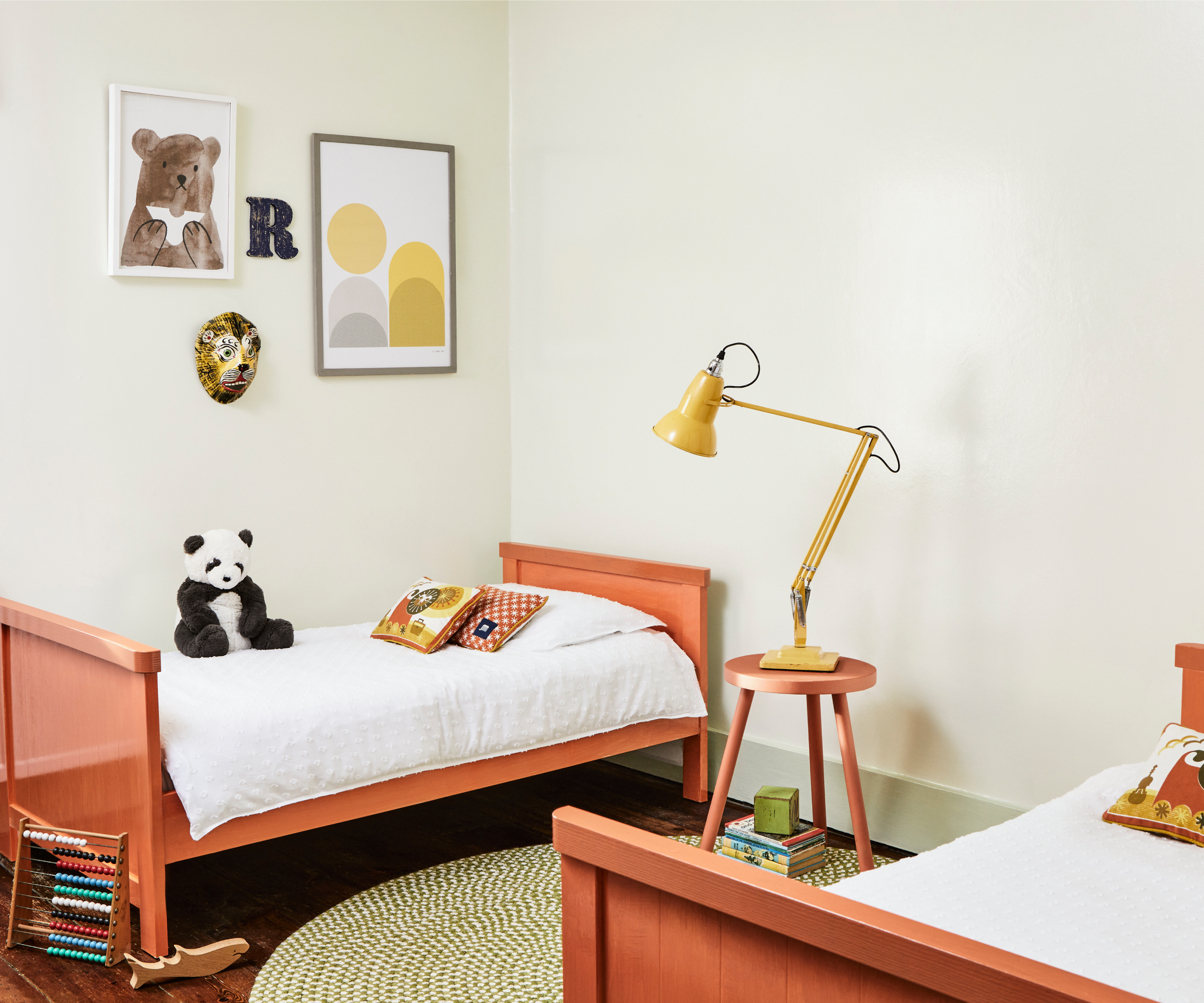
"A good starting point for shared kid bedroom ideas," says Emma Deterding, "is choosing a neutral colour palette as your base, as this will allow each child to personalise their 'zone' with their favourite colours and decorative pieces. It'll also allow you to switch it up easily as they grow or their interests change."
For similar paintable bed frames try these Sussex single pine bed frames from Noa & Nani and find a great selection of child friendly wall art at Fy.
When it comes to decorating make sure you know what is vinyl matt paint so that you purchase an emulsion that can stand up to daily knocks, and try to use a low VoC paint such as the ones on offer at The Paint Shed, so that you create a more enviromentally friendly finish.
6. Create the den of your teenage dreams
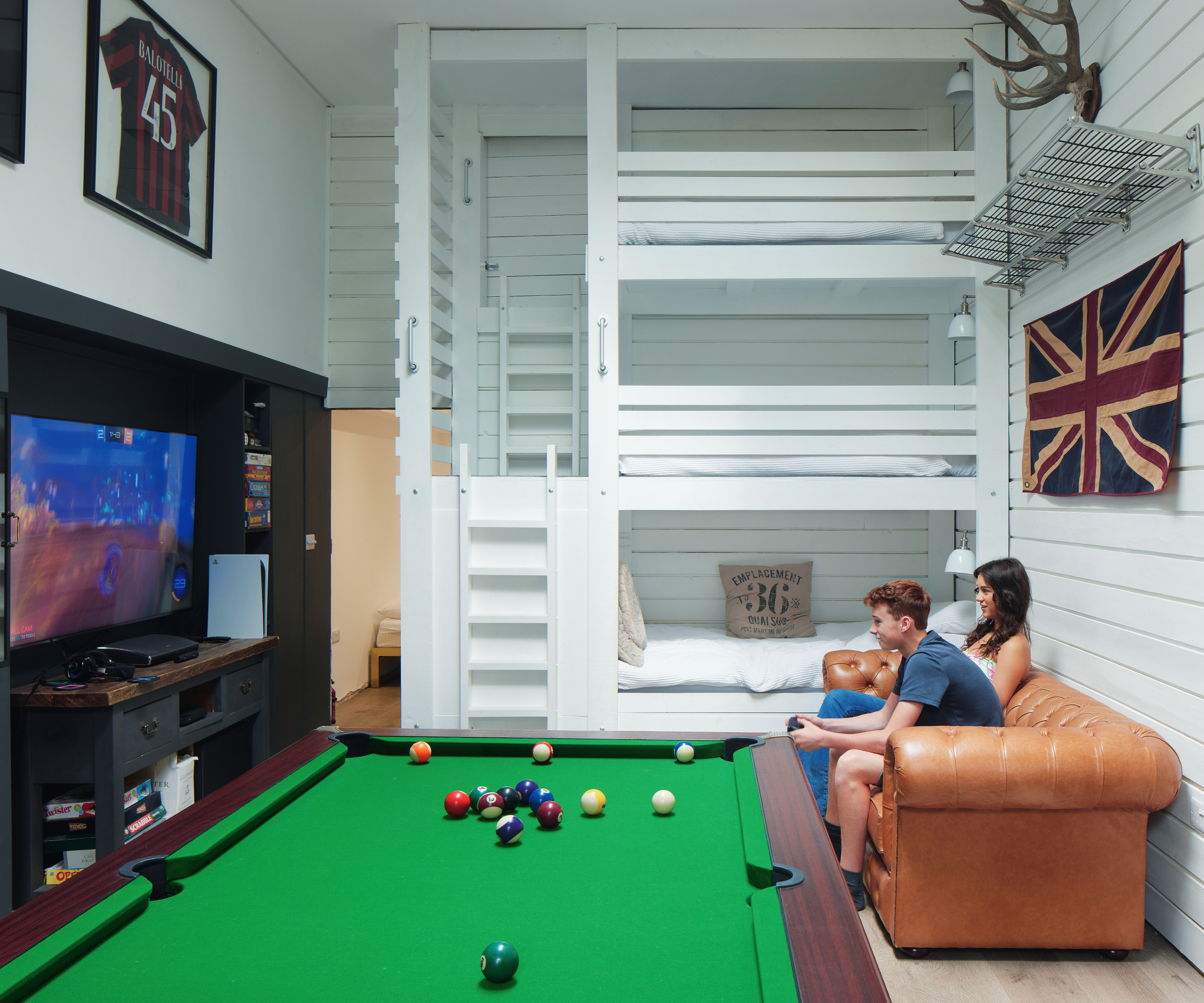
If you had the chance to turn back the clock and redesign your own childhood bedrooms, there's a chance you'd have craved a place to escape once your hit your teenage years.
Now is your opportunity to indulge in that dream by recreating it for your own children. If you're planning a self-build and have the luxury of giving them a larger space of their own, combine gaming room ideas and bedrooms into one and build a sleepover den of dreams. Even if they still have their own bedrooms on another floor, we can guarantee you'll find them there with plenty of friends on the weekend.
7. Combine rest and play with clever furniture design
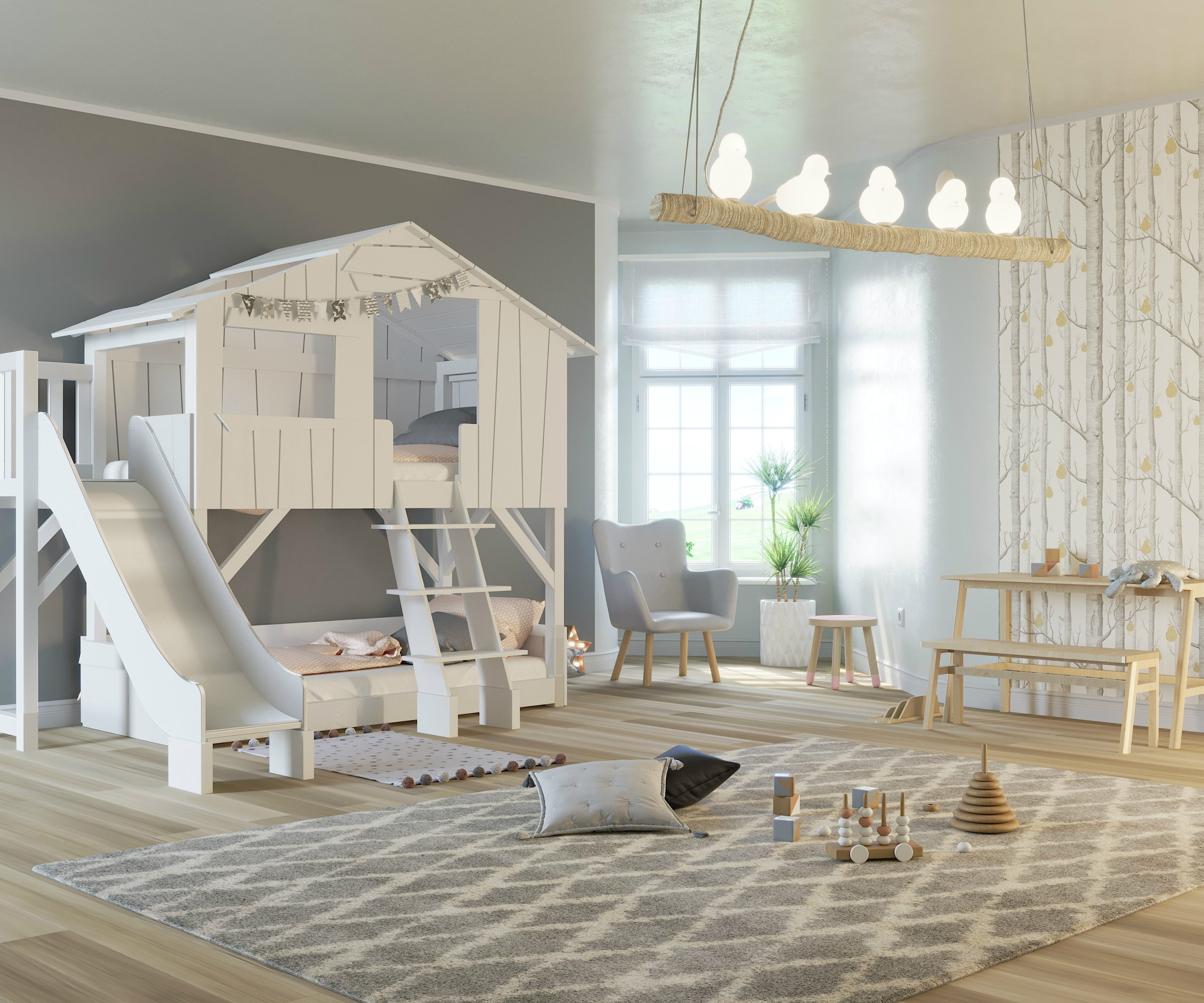
For feeding imaginations and making sleep time more fun, enjoy bedroom furniture shopping for shared bedroom ideas. We can't guarantee there won't be fights at bedtime regarding whose turn it is to sleep in the top level of this treehouse style bed, but we are fairly sure its a shared bedroom idea they'd never want to grow out of.
And as the furniture statement is so bold, pick a neutral palette again that you can work with as they grow older. Grey bedroom ideas are perfect for adding pastels, brights or even monochrome colours into the mix as their tastes and needs change.
From the start, "create distinct zones within the room to cater to different activities," says James Mellan-Matulewicz. "A cozy reading nook with bean bags or a small sofa can become a retreat for relaxation and quiet time. Ensure there is ample play space, possibly with a rug that defines the area, where children can engage in activities together."
8. Add dividing doors or furniture
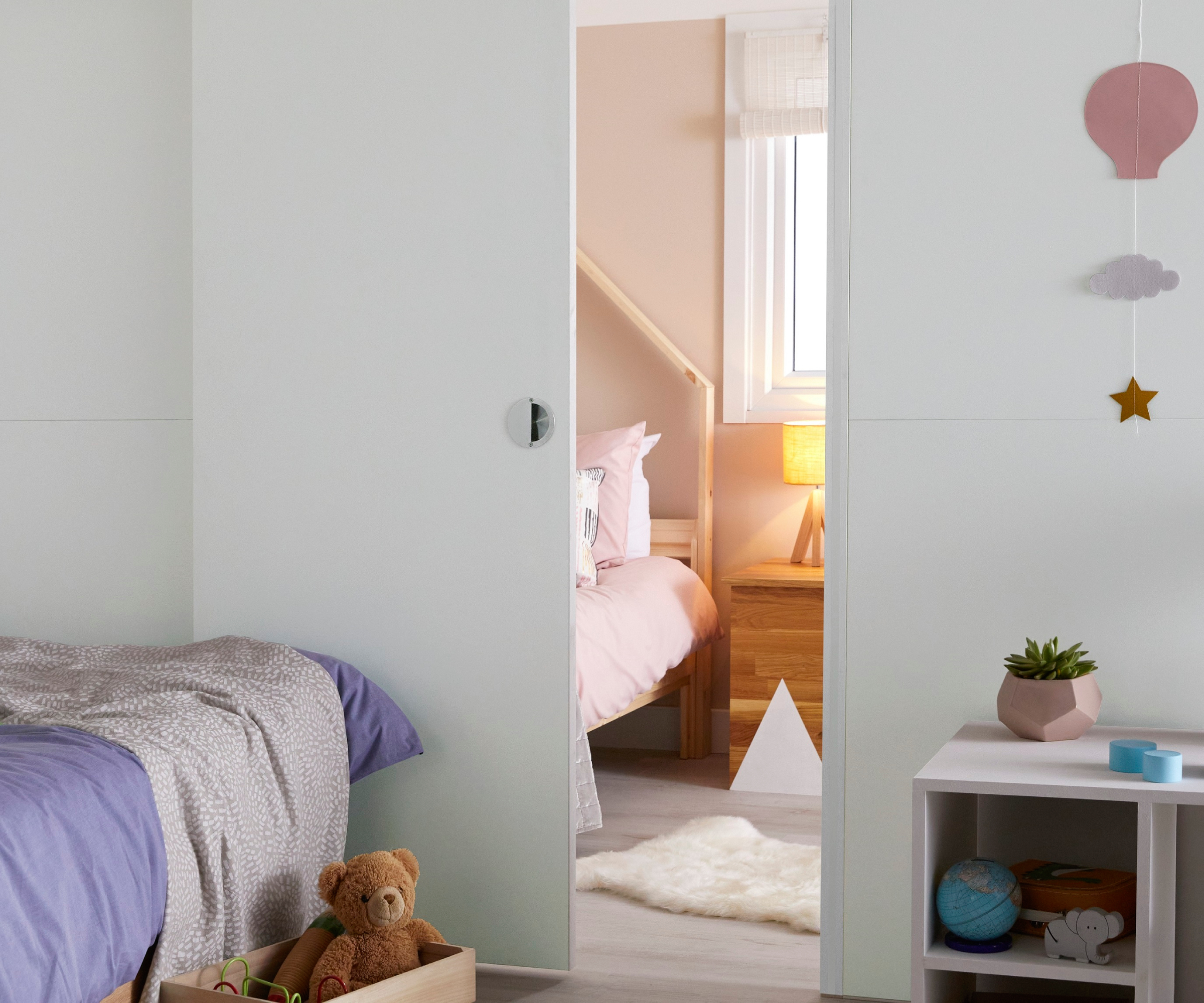
"Your children will most likely want to have a section of the room that feels like their own little space," says Sophie Clemson, director and co-founder at The Living House.
While you can create openings with partition walls and add sliding doors as a permanent solution, "furniture is also a great way to divide the room into two separate spaces, while still making the room feel open and cohesive," suggests Sophie.
If you're feeling up to the challenge of a permanent solution, follow our guide to find out how to build a partition wall. If not, "IKEA Kallax units work brilliantly for this as you can almost split the room into two using Kallax units," says Sophie. "You will also gain storage using the cubes for toys, clothes, books, anything that needs putting tiding away.
"Of course, it's always important to make sure the furniture is sturdy enough when using as a divider and consider fixing it to the wall," she notes.

Sophie Clemson is a fount of knowledge on all things interiors having worked in the industry for eight years. Aside from designing, she loves to find a good interior design bargain or Facebook marketplace find which was invaluable when she renovated her home in 2022.
8. Install loft beds in rooms with high ceilings
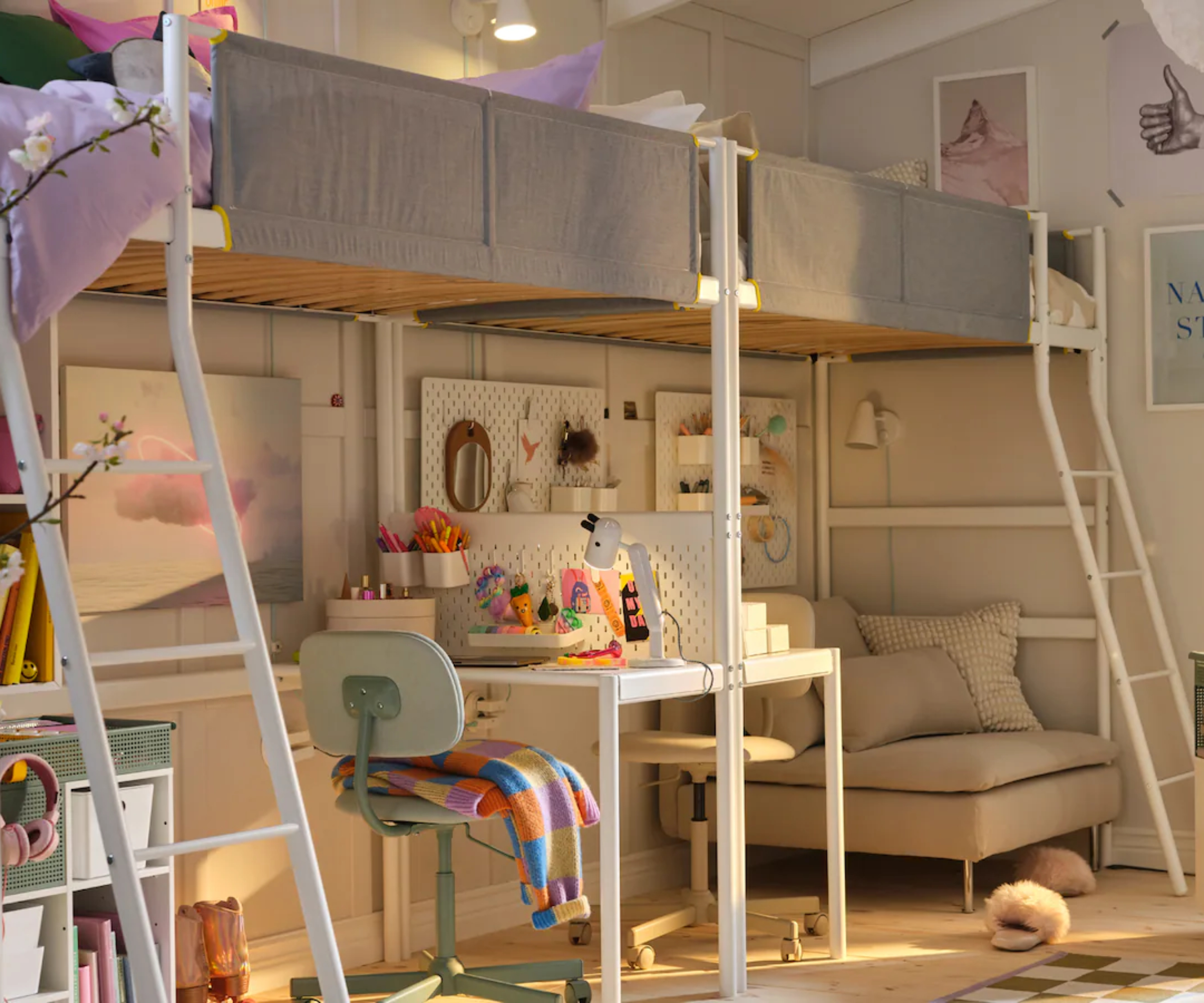
"There a wide range of multi-functional furniture available on the market that can help with shared bedroom ideas," says Emma Deterding, "with bunk beds and high-sleeper beds including everything from desks, wardrobes to even seating areas underneath."
These Vitval loft bed frames from Ikea are a great example of multi-purpose furniture that will still allow each child to feel they have their own space in the bedroom.
While the top layer is uniform in design, the open space below gives them free reign to kit it out as best suits them. Be it for crafting, game playing, watching TV or completing homework, you could even add curtains or dividers to completely separate them.
9. Pick a bold, primary colour scheme for a shared bedroom that's also a space to play
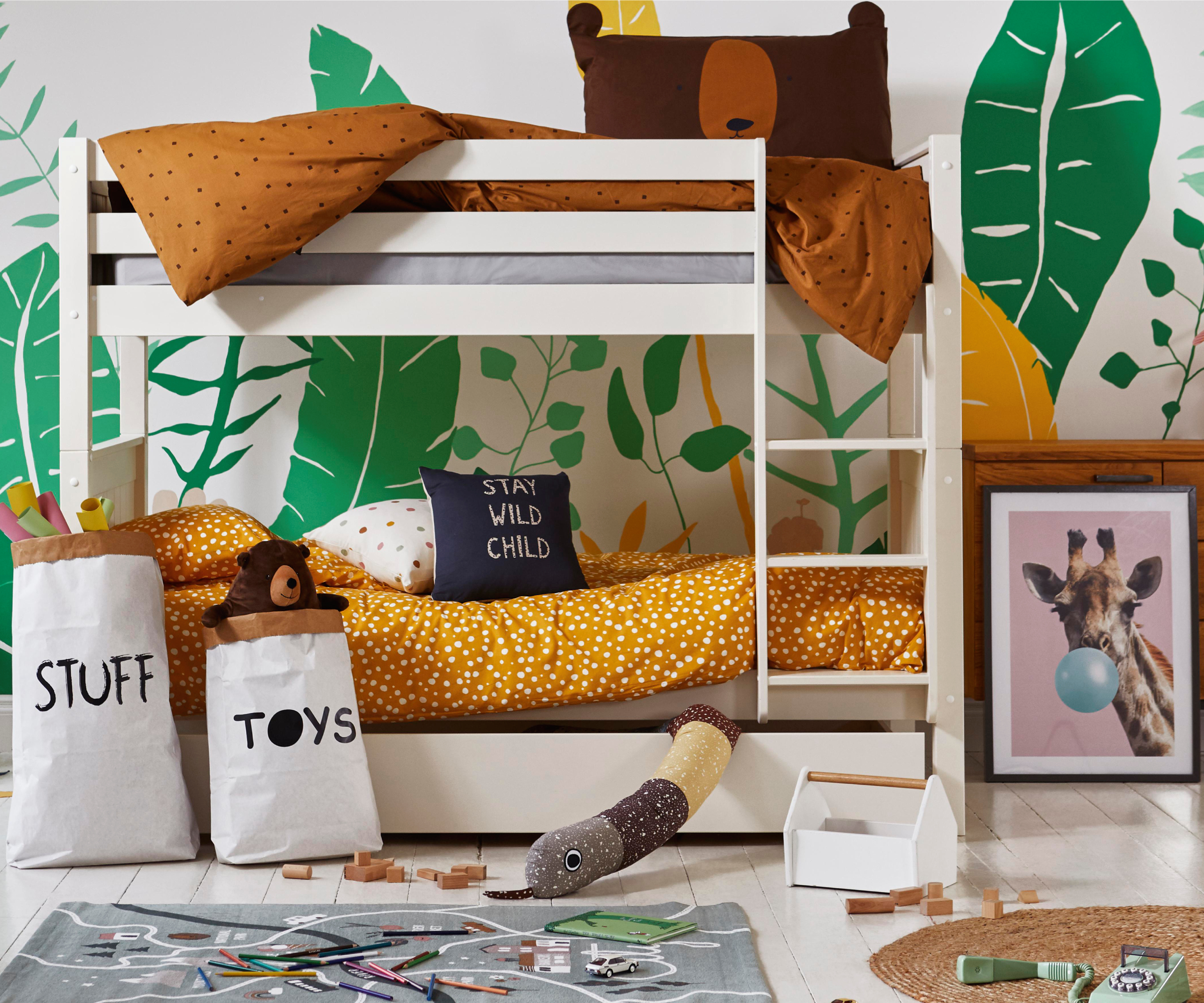
Although sleeping is the primary purpose of a bedroom, if it's also a space to play, you'll need to consider the theme, colours and how best to combine the two. If fun is your driving force then pick a theme and run with it. But - beware of ever-changing tastes and decorate wisely.
“To ensure the room grows with your children and plays to their individual interests, pick a neutral colour and add wall decals, accents and pieces of furniture that can easily be replaced," says Charli Davies. "This is one way to have a flexible space that doesn’t need completely redecorating every time your children’s interests change, which could be weekly.”
We love this jungle themed room that uses bold greens and yellows against a white backdrop to fire up imaginations. Practical painted wooden floorboards keep the space easy to clean (no searching how to remove stains from carpets here) and the use of white makes it easier to touch up marks and scuffs.
10. Opt for built-in furniture for a clutter-free design

If you're weighing up freestanding wardrobes vs fitted, "built-in joinery is always a great idea for kids bedrooms," says Emma Deterding, "as it maximises on the space available, using awkward spaces in rooms to their best.
"Consider building multi-functional shelving units to store books or display their favourite toys and memories in an alcove, doors can be included at the bottom to hide away other toys and items that don't need to be on show all the time.
"Each child should have a designated cupboard or shelves to maintain a sense of individuality within the space," says Emma.
"Built-in wardrobes can also make the most of awkward spaces such as sloping ceilings or angled walls, providing ample storage for clothes and other items - you could even hide a desk space behind a cupboard door, something your children may not need now, but will need for studying as they grow up.
"By concealing as much storage in your built-ins, you'll be able to keep everything organised and leave the rest of the floor space for the bed with space for relaxing and play."
11. Cover your windows well for a guaranteed good night's sleep
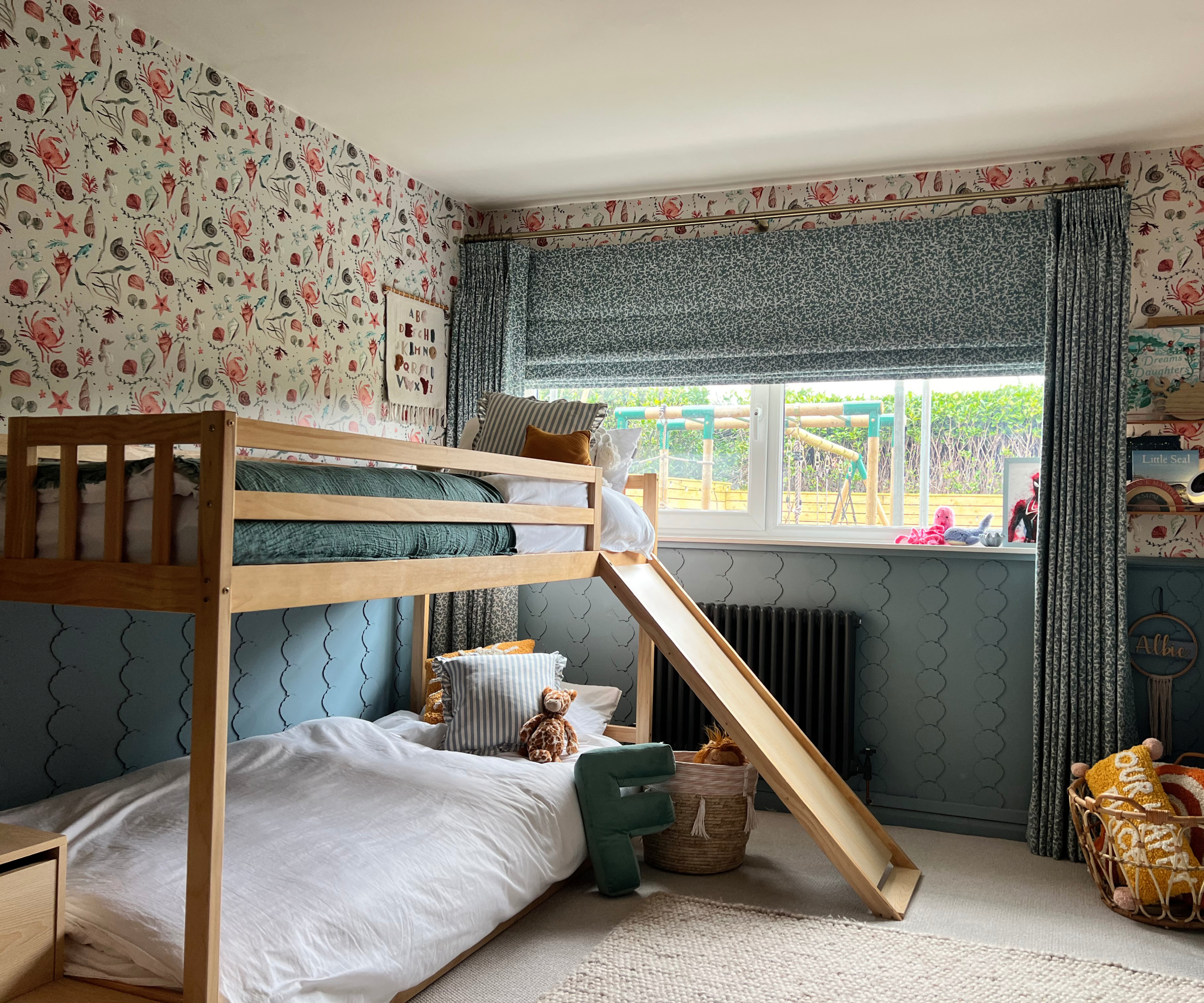
“Choosing calming, gender-neutral shades for your children’s bedroom window dressing – such as a muted green, red and neutrals – can help create a more restful environment," says Yvonne Keal, product manager at leading window dressing company Hillarys.
"Roman blinds with blackout lining will help block light from entering the room, encouraging your little ones to drift to sleep. Pair with blackout curtains for maximum light blockage, or for more flexible light control go for voile curtains," she suggests. "They'll softly filter the natural light while providing privacy in the day, and at night the Roman blind will keep things dark and cosy.”
“Ensure your blinds also have a regulated safety device installed by your advisor at the time of fitting, so there are no loose cords or chains to tempt little fingers. You could also choose from a range of cordless blinds, such as perfect fit, pleated or even smart electric blinds operated via remote, app or voice command, making them inherently child safe.”
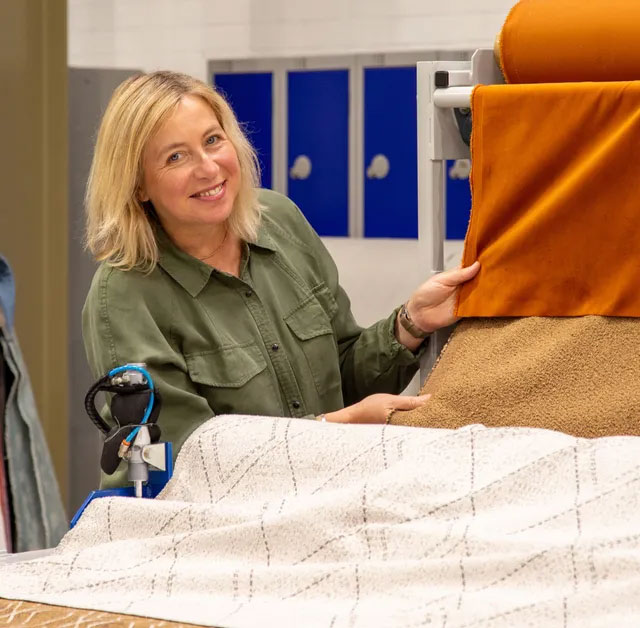
Yvonne is a product management specialist with over 20 years’ experience in the interiors industry. Since joining Hillarys in 2003, Yvonne has successfully launched many window dressing collections, including roller blinds, vertical blinds, Roman blinds, curtains and voiles.
Looking for something you do now to divide an existing shared bedroom? Sophie Clemson shares her final tip.
"Paint is a great way to divide a children’s shared bedroom. There are lots of fun shapes and designs you can paint onto the walls to zone each child’s area within the room.
"This is also known as colour blocking and it doesn’t have to cost the earth," she says. "If you’re using multiple colours you may even get away with tester pots or small tins of paint depending on the design."
For a professional finish, follow our guide on how to paint a room to get the job done well.

Sarah is Homebuilding & Renovating’s Assistant Editor and joined the team in 2024. An established homes and interiors writer, Sarah has renovated and extended a number of properties, including a listing building and renovation project that featured on Grand Designs. Although she said she would never buy a listed property again, she has recently purchased a Grade II listed apartment. As it had already been professionally renovated, she has instead set her sights on tackling some changes to improve the building’s energy efficiency, as well as adding some personal touches to the interior.

